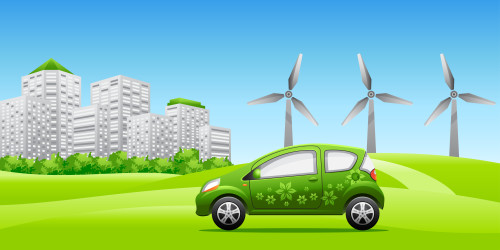Gas Is Out, Hydrogen Is In With Hydrogen Fuel Cell Cars

Gas, electricity, diesel, and now…hydrogen? With eco friendly vehicles high on the global radar, hydrogen fuel cell vehicles are beginning to make their debut. Toyota produced the first in 2014, the Mirai, but more are sure to follow in the coming years. Along with a bevy of benefits, hydrogen fuel cell vehicles also pose some controversial questions and changes for consumers. Here’s what you need to know about these new hydrogen-powered vehicles.
They aren’t electric, hybrid, or gas guzzling vehicles.
Hydrogen fuel cell vehicles aren’t any of the above. They’re an entirely new model that converts hydrogen gas into electricity through the use of oxygen and an electric motor. Technically, you can look at them as a hybrid of an electric car and hydrogen fueled vehicle, but not in the traditional car industry terms.
Hydrogen fuel cell cars run cleanly.
Since the only emissions from fuel cell vehicles are hot water and oxygen, they remove tailpipe emissions entirely. This means less pollutants in the air, less greenhouse gas emissions, and better air quality. In fact, hydrogen fuel cell vehicles reduce greenhouse gas emissions by 30% (even when sourced from natural gas) compared to gas/diesel powered vehicles. Hydrogen is also the most plentiful element in the world—meaning there’s a lot to go around. However, there is always a “but” and this this case, it’s the slew of negative facts surrounding how hydrogen is harvested which may offset the positives.
“Hydrogen fuel cell vehicles—even those with hydrogen mined from natural gas— cut emissions by 30% more than gas/diesel powered vehicles.”
Hydrogen isn’t farmed from the purest source… yet.
Mainstream hydrogen gas sourcing isn’t done in the cleanest way. Most of it comes from natural gas which is procured through hydraulic fracturing—or fracking. This is a highly controversial procedure which requires drillers to go hundreds of feet below the earth’s surface to break up shale formations and retrieve natural gas and/or oil. Fracking uses hundreds of thousands of gallons of water to cool the drills and pollutes groundwater and runoff with chemicals that are released during the process. Fracking has also been blamed for causing small earthquakes. Although there are plenty of other cleaner ways to farm hydrogen, this is the cheapest and therefore, most commonly used practice.
Hydrogen isn’t technically a renewable energy source.
Hydrogen fuel isn’t something that exists naturally on earth. It’s something we have to make. Hydrogen is an “energy carrier” that is made after its molecules are separated from others. While hydrogen is one of the most abundant elements, the way it’s most commonly extracted is not sustainable or environmentally conscious. However, if methods of extraction like solar and wind are used more prevalently, hydrogen can become a cleaner means of fuel.
California is leading the charge in cleaner hydrogen extraction.
California has been working for years testing hydrogen fuel cell cars. By the end of 2015, California aims to source 46% of its hydrogen from renewable resources (like wind and solar). They’re also working toward reducing carbon emissions up to 50% compared to all other vehicles. This translates to what the emissions would be from a vehicle that averages 63 miles per gallon.
You need a special “gas” station to fill up.
California is working on building 55 hydrogen “gas stations” by the time 2015 comes to a close. According to the U.S. Department of Energy, right now there are only 12 in the entire country. With more and more FCEV (fuel cell electric vehicles), you can expect to see a lot more of these stations pop up around America.
What does this mean for consumers?
If you already drive a hybrid and want something even more environmentally responsible or want to make the switch from a diesel truck to something cleaner, do your research before you fill up at certain stations to determine how clean the hydrogen is. Then, enjoy cleaner driving and a smaller carbon footprint.
Free Insurance Comparison
Enter your zip code below to view companies that have cheap insurance rates.
Secured with SHA-256 Encryption
